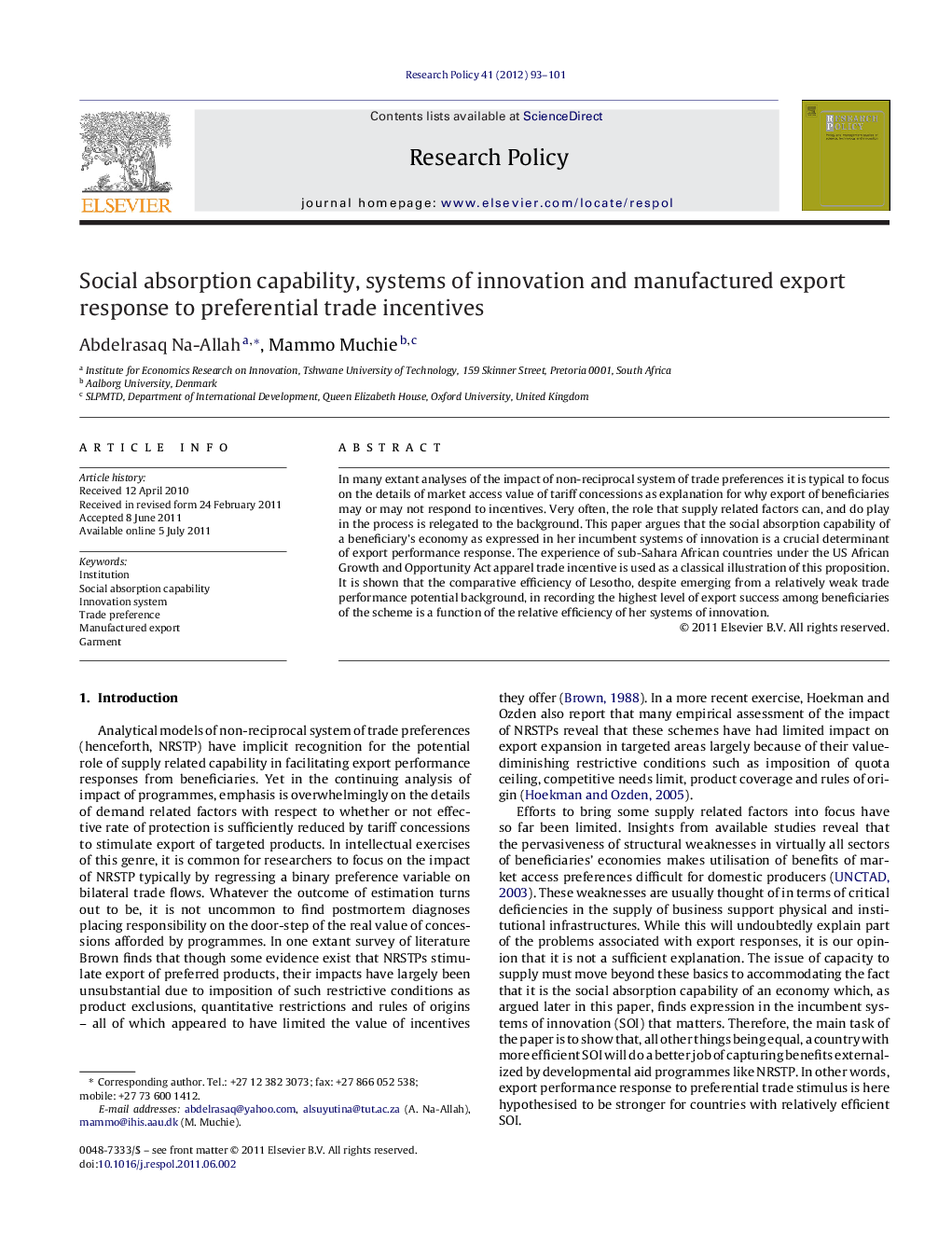| کد مقاله | کد نشریه | سال انتشار | مقاله انگلیسی | نسخه تمام متن |
|---|---|---|---|---|
| 985024 | 934407 | 2012 | 9 صفحه PDF | دانلود رایگان |

In many extant analyses of the impact of non-reciprocal system of trade preferences it is typical to focus on the details of market access value of tariff concessions as explanation for why export of beneficiaries may or may not respond to incentives. Very often, the role that supply related factors can, and do play in the process is relegated to the background. This paper argues that the social absorption capability of a beneficiary's economy as expressed in her incumbent systems of innovation is a crucial determinant of export performance response. The experience of sub-Sahara African countries under the US African Growth and Opportunity Act apparel trade incentive is used as a classical illustration of this proposition. It is shown that the comparative efficiency of Lesotho, despite emerging from a relatively weak trade performance potential background, in recording the highest level of export success among beneficiaries of the scheme is a function of the relative efficiency of her systems of innovation.
► We examine export supply response to preferential trade incentives.
► Supply response is a function of beneficiaries’ social absorption capability.
► Social absorption capability finds expression in beneficiaries’ innovation system.
► Supply response is greater for countries with relatively strong innovation system.
Journal: Research Policy - Volume 41, Issue 1, February 2012, Pages 93–101